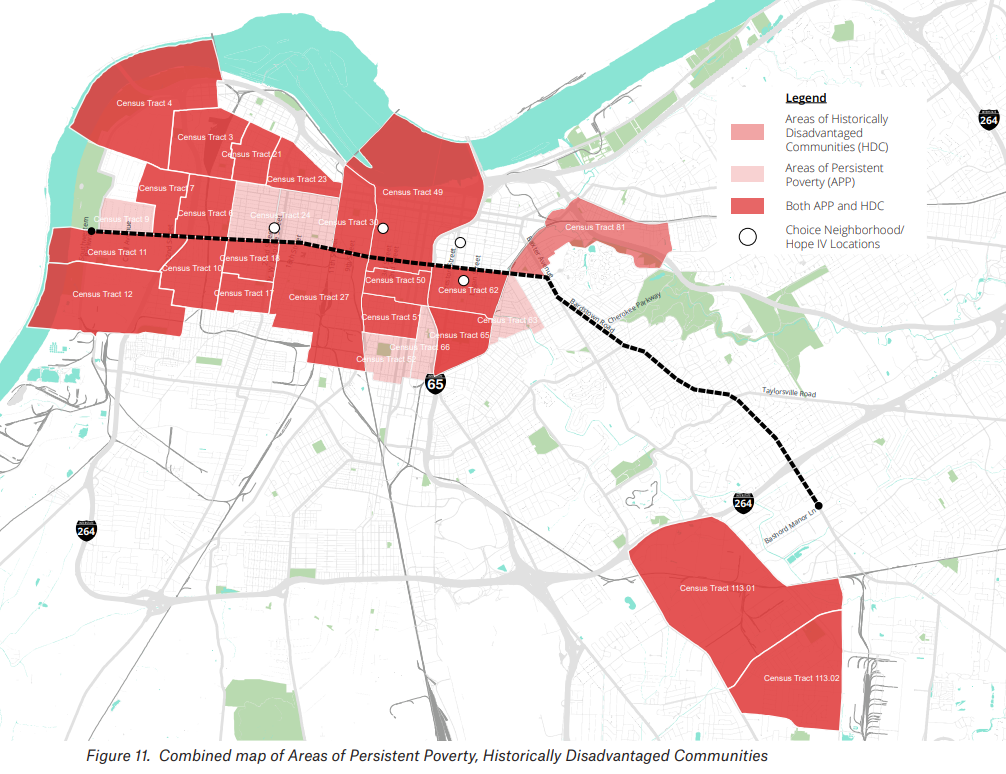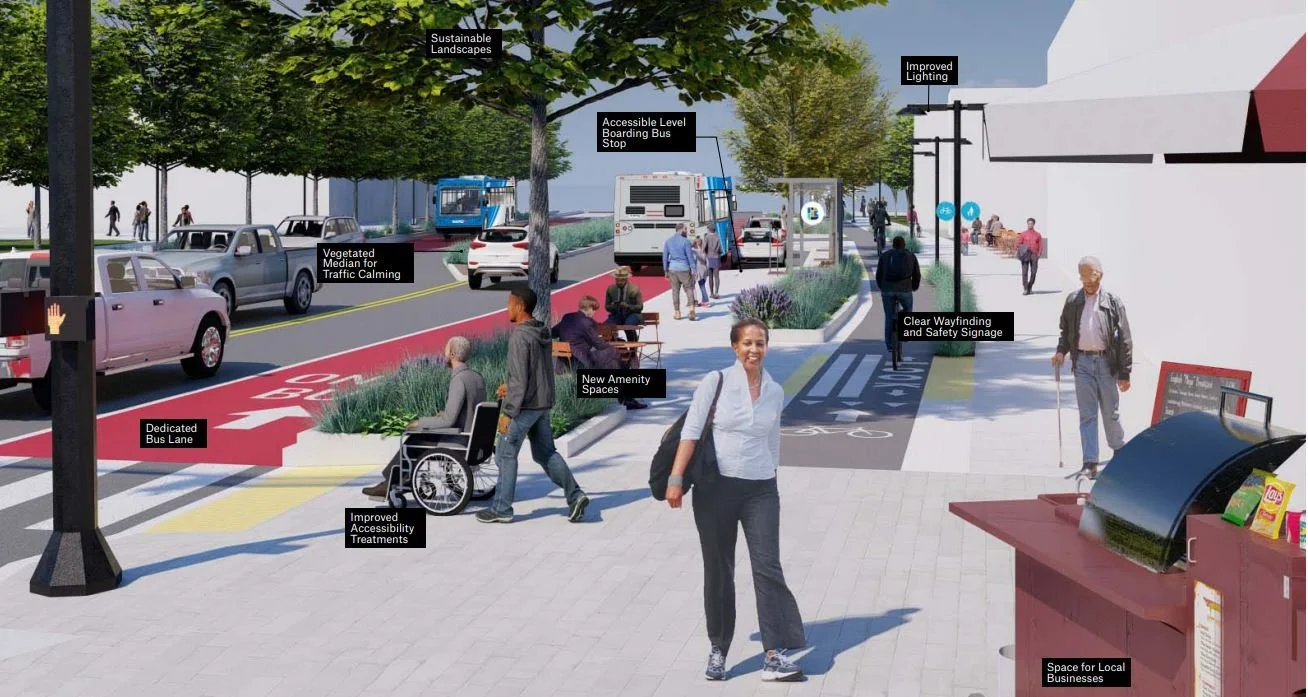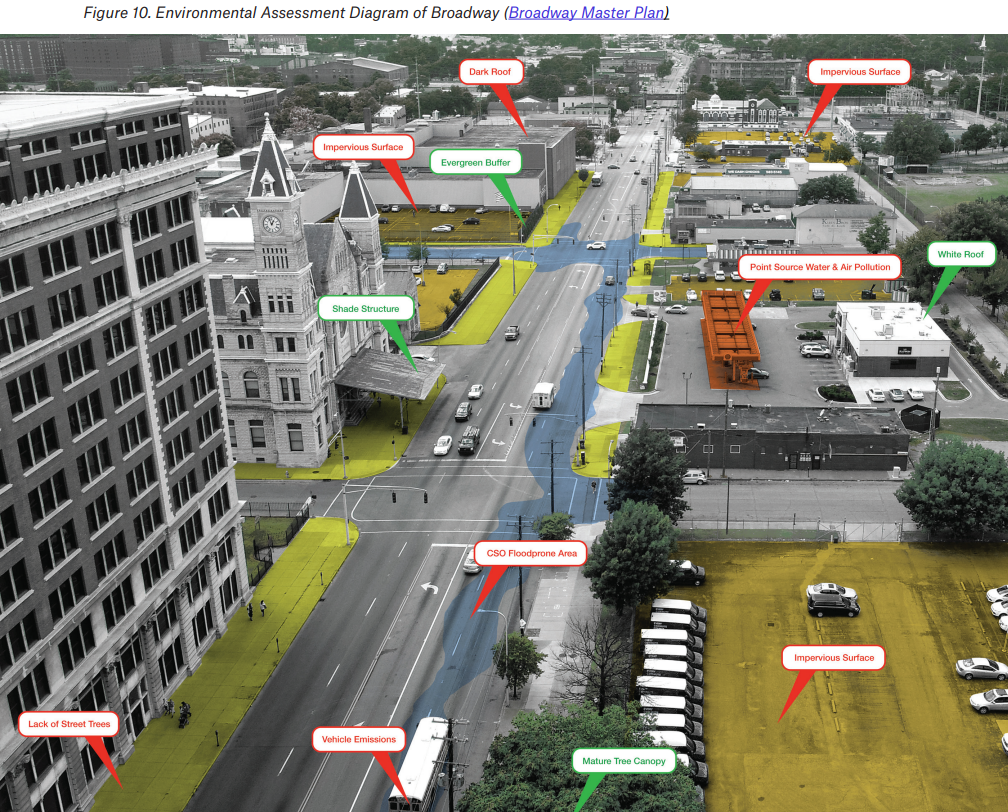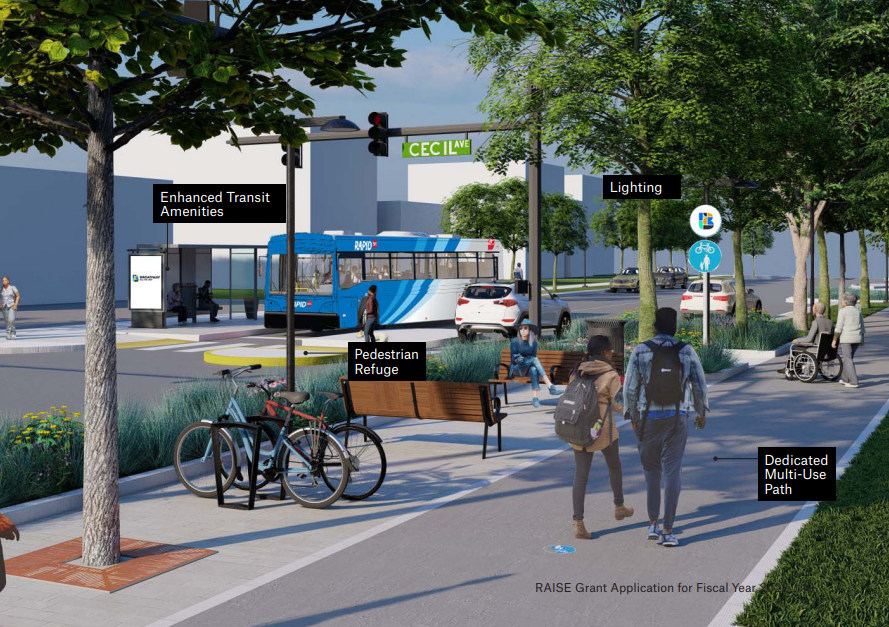Equity through Infrastructure: Louisville’s Broadway All the Way transit plan
Imagine your city. Think of one major road that cuts through the urban core. In most of the US, odds are this road is too wide, not that walkable, and has some missing teeth. Cities across America are working to fix these mid-century errors through planning, design, and infrastructure investment. The “Corridors” theme of 2023’s CNU Congress in Charlotte showcased the importance of these efforts. Today we’re zooming in on Louisville, KY’s version of this work, a plan called Broadway All the Way.The Project
Broadway is an iconic six-mile corridor that cuts through many of Louisville’s historic neighborhoods. It is lined with a host of institutional users like hospitals, schools, and government buildings. Broadway is anchored by an Olmsted Park to the West and Cave Hill Cemetery, where historical figures like Muhammad Ali and Col. Sanders are buried, to the East. It’s high profile and impacts a huge percentage of the Louisville community.In 2018, the City of Louisville decided it needed a new vision for this critical corridor and addressed this in Move Louisville, the city’s multi-modal transportation plan. One of the plan’s outcomes was to prioritize corridors for complete street retrofits. “Broadway was a great candidate for priority transit and BRT. It’s a particularly unsafe corridor, especially for pedestrians and bikers. Nearly every TARC line touches the Broadway line. It’s our second heaviest used line,” shared Michael King, Director of the Office of Planning for the City of Louisville.Once Broadway was identified as a potential pilot project for the city’s complete street effort, work began on a visionary plan now known as Broadway All the Way. King served as the project manager for this plan. “Our office does a lot of big picture planning, community visioning, front end transportation planning and partner engagement,” King said.The initial Broadway All the Way plan was completed in mid 2022. The City of Louisville, in partnership with TARC (the city’s transit authority), was then awarded a $5 million federal RAISE planning grant to take the plan from a concept vision, through design and regulatory approvals, to buildable construction drawings.“The goal is to keep existing bus services, add BRT, and provide better facilities. Any investment the city can make to improve transit here is a huge opportunity for us. It’s one of the most equitable, sustainable things we can do,” said King.The Process
This is a very high-profile project along a high-profile corridor, so public engagement and community input was especially critical to the vision. In addition to the standard public meetings required for this sort of process, King’s team did some unique things to get the community involved. “We hopped on the Broadway bus line and talked to the regular users about their experience. What they liked, opportunities for improvement.” The team also held a program called Breakfast on Broadway where they set up shop on the street with wooden signs, coffee, and doughnuts. From the street they talked to pedestrians along Broadway about the potential project and asked a slew of community engagement questions.“When we went out and talked with folks there was no pushback about taking capacity away from single-user vehicles. People living and working along the Broadway corridor are way more concerned about placemaking and multimodal transport than making the road good for cars. People want a sense of place and better safety,” King shared. “It’s critical to create a unified corridor that ties Broadway together while keeping the authenticity of the individual neighborhoods. What’s going to work in one area won’t work in another area.” King also shared that public art, tree canopy, plazas, and public spaces are components of the plan.The Big Picture
When I asked him why it was a priority for the City of Louisville, King said, “Infrastructure –roads, etc. – are one of the few physical assets the government truly controls. For us to improve and invest in that is going to spur a lot of opportunities along the corridor. There are a lot of missing teeth along Broadway today. This will spur economic development to fill those gaps – the spin off possibilities of this investment are very exciting.”And these “spin off possibilities” won’t be limited to Broadway. After preliminary technical review, the team found that a six miles stretch anchored by a park and a cemetery was not a long enough to accommodate a true BRT corridor. So, though capital improvements like the dedicated BRT lanes will be restricted to Broadway, the actual BRT service will likely extend another 4.5 miles beyond Broadway to Baxter Ave. and Bardstown Road (through the historic Highlands neighborhood).What Comes Next
King’s office is currently waiting on final release of funds for the RAISE grant and anticipate the design work will begin in early 2024. This phase (from schematic design through construction drawings) will take about two years, meaning construction could begin in 2026.In the meantime, the City of Louisville will be working with TARC on an operations plan for the improved corridor. “This could really set us up for a blueprint for how we refocus our transit usage. Adding more and better service on these lines is important. This is the first corridor to see this kind of focused rework - we hope it’ll be a great pilot for the rest of the City,” King said. “As in much of the Midwest, it’s inexpensive and easy to drive in Louisville. We want BRT to be a competitive option.”Author Bio:
MK Lindsey is Vice President of Real Estate Development for Crawford Hoying in Columbus, OH. Crawford Hoying has a diverse ~$2.5B portfolio including over 3,000 residential units, over 19 million sf of office and retail, 20 hotels, industrial, senior living and student housing. MK leads the redevelopment team, identifying deals and managing site selection, from master planning, entitlements and municipal negotiations to brand story development and financial feasibility. For the last decade, MK has created dynamic destinations - distilleries, museums, corporate visitor centers, parks, historic tax credit projects and walkable neighborhoods, amassing a project portfolio of around $1B across 7 states.





